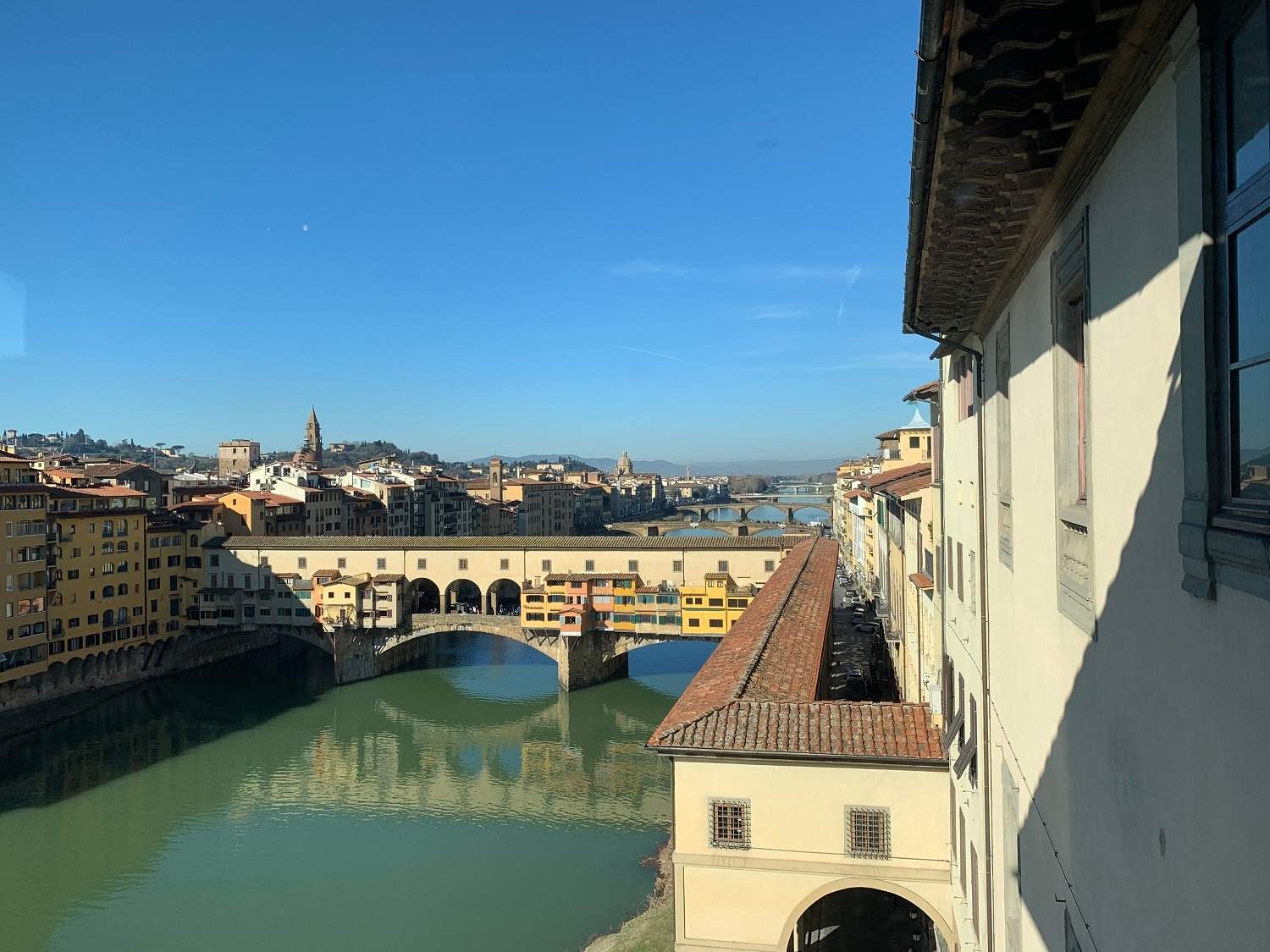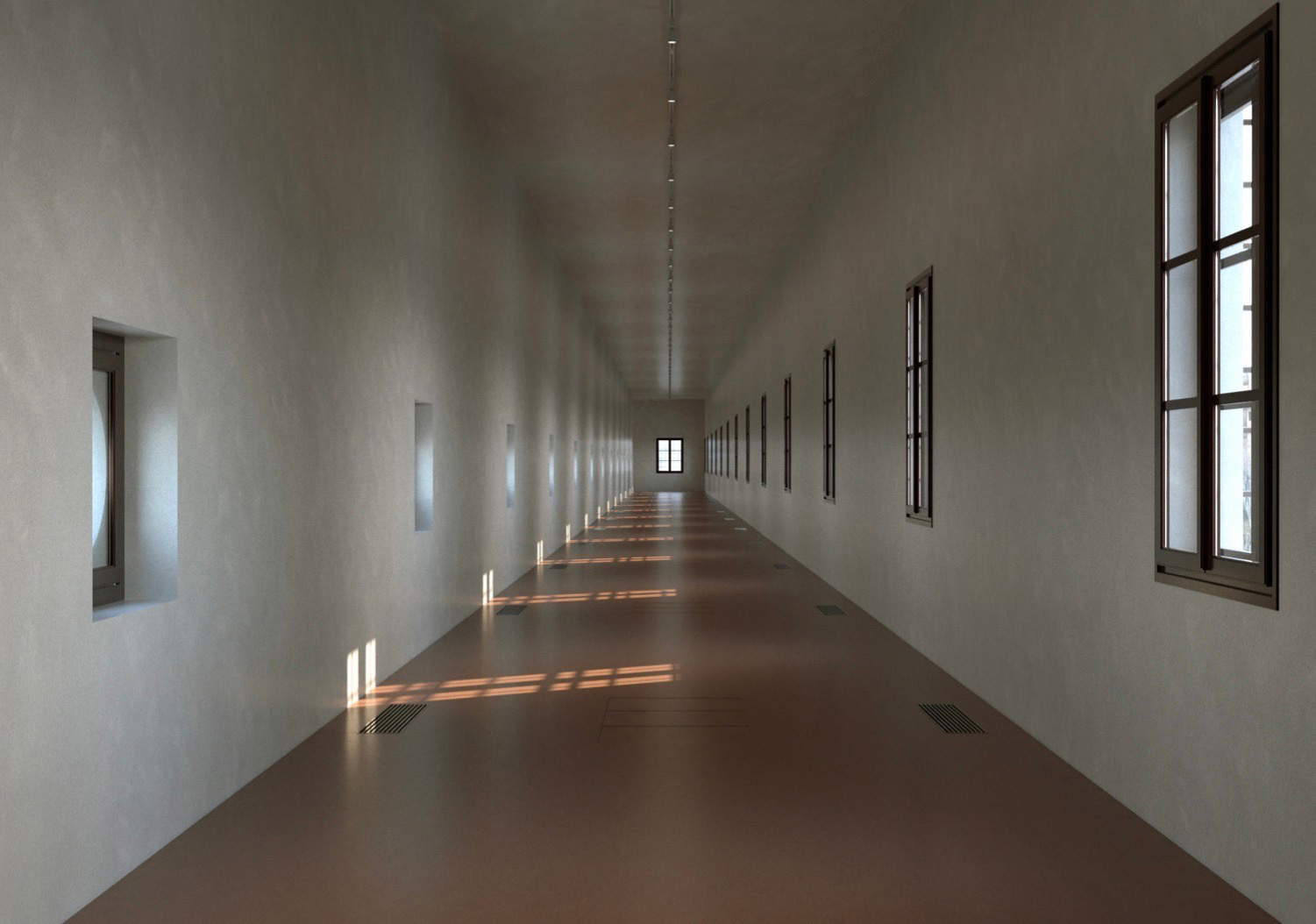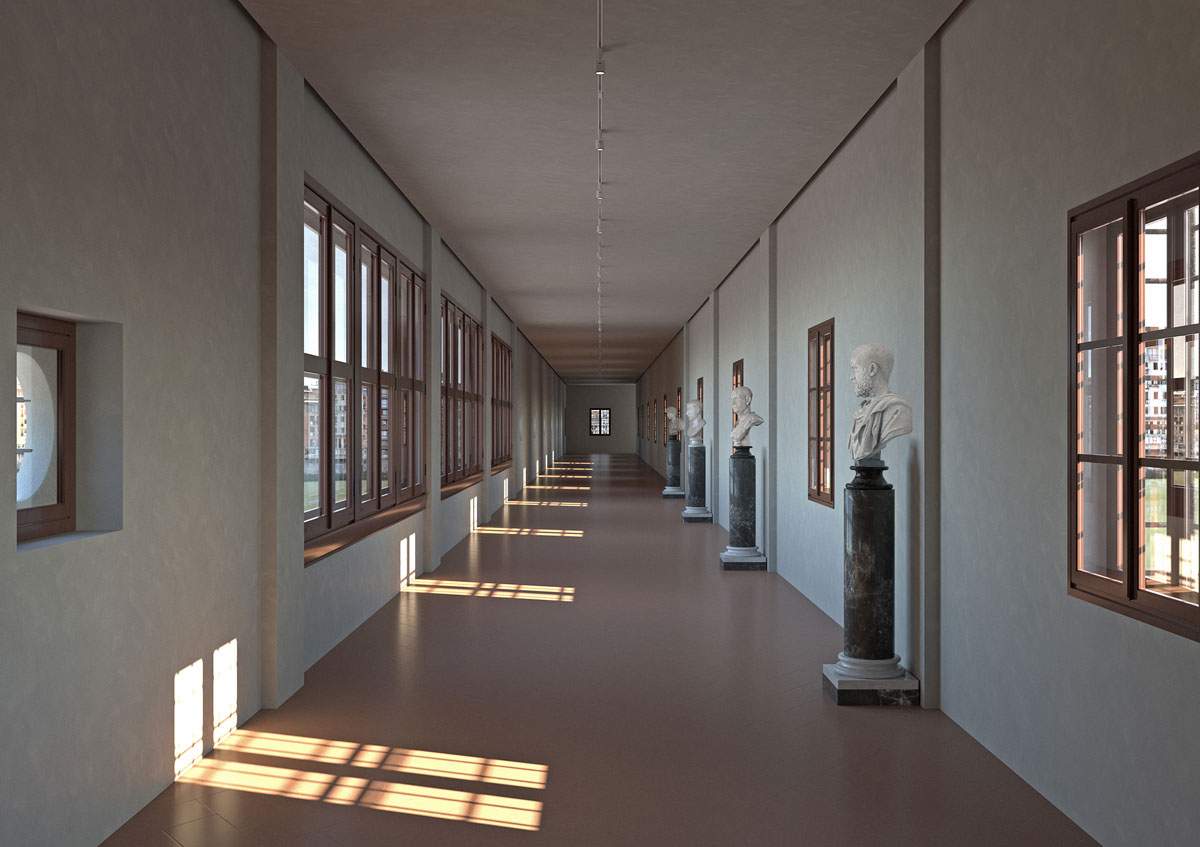There is an official go-ahead in Florence for the work needed to prepare the Vasari Corridor of the Uffizi Galleries for opening to the public, scheduled for next year. In fact, the contracting phase of the project has been concluded, and the intervention will start after Easter, for a planned duration of about fifteen months (eleven for restoration, three-four for refitting). The project for the restoration, adaptation and safety work (with a tender value of about 7 million euros, total cost 10 million, already financed) of the corridor that connected Palazzo Vecchio to the palace of Palazzo Pitti and the Boboli Gardens, passing through the Uffizi and over Ponte Vecchio, had been put out to tender last July and, as anticipated, has reached the conclusion of the awarding phase, managed by Invitalia. Winning the tender was the business association Fratelli Navarra-Dafne Restauri.
“It would be significant, and now, pandemic permitting, it’s becoming a real possibility,” says Uffizi director Eike Schmidt, “if we were able to inaugurate the Vasari Corridor precisely on May 27, 2022: that day in fact is the anniversary of the Georgofili massacre that in 1993 severely damaged the initial part of the corridor, as well as ruining hundreds of Uffizi paintings. More importantly, in the middle of that night, the Mafia brutally took the lives of five people. The feat of getting the Corridor back up and running safely is a warning against all forms of aggression against humanity and our cultural heritage, and at the same time a clear sign of hope in restarting after the long period of closures due to the pandemic.”
“I express my great satisfaction for the start of such an important work for the city of Florence, which will lead to the creation of a large, unique museum circuit and which once again stems from the collaboration between the Superintendency and Galleries, confirming the excellent skills that are still present in the peripheral offices of the state administration,” Andrea Pessina, superintendent of Archaeological Heritage, Fine Arts and Landscape for the provinces of Florence, Prato and Pistoia, says instead.
 |
| Vasari Corridor, exterior |
The Vasarian Corridor had been closed to visits since 2016 for security reasons, and the works that will start after Easter will be functional to ensure the reopening of the site to the general public in the ordinary way: to enable this, the Corridor will be entirely refurbished. Visitors, by paying the price of a special ticket, will have at their disposal a new panoramic walkway over the center of Florence, starting from a specially made entrance on the ground floor from the Gallery of Statues and Paintings.
The executive project for the reopening was carried out by the Uffizi Galleries and the Soprintendenza Archeologia Belle Arti e Paesaggio for the metropolitan city of Florence and the provinces of Pistoia and Prato, under the direction of architect Mauro Linari, and the single project manager, architect Francesco Fortino. It was unveiled in February 2019 after 18 months of studies, research and investigations involving dozens of specialists (more than a thousand pages of the program, 201 square meters of elaborations made, 23 specialized reports drawn up, 2435 photographs, dozens of tests and essays on materials made).
The new route of the Vasari Corridor, the Uffizi Galleries point out, will ensure complete accessibility for the disabled, with an integrated system of ramps, platforms and elevators that will make it easy to overcome any height difference along the itinerary and will be equipped with toilets. In addition, for the first time, the Corridor will have an air conditioning and heating system that will regulate its internal temperature at all times (geothermal probes placed underground in the courtyard of the Hunts of the Boboli Gardens will also be part of it for the purpose of reducing environmental impact), it will have low-energy LED lighting and it will be fully video monitored. Among the main interventions included in the project is the construction of new emergency exits. The program also includes local structural consolidation works as part of the earthquake prevention plan, and the restoration of the interiors, which have not undergone restoration work for several decades: in particular, plasterwork, tiling, and the floor, which will be entirely disassembled and reassembled in ancient terracotta.
The new Vasari Corridor route will be accessed from the ground floor, in the Uffizi’s Ponente wing. Using an elevator, visitors will ascend to the second floor, where the entrance to the Corridor will take place. It will be passable in one direction only, that is, from the Uffizi (entrance) to the Pitti Palace (exit), and is currently planned to hold a maximum of 125 people inside it at the same time, according to security regulations. At the end of the itinerary, visitors can either exit into the Boboli Gardens or continue inside the Pitti Palace, with access already included in the ticket. At the center of the visit will be the panoramic walkway above Florence: the 73 windows placed along the route (many of which have hitherto been obscured to protect the paintings) will be reopened.
In addition to the panoramic one, however, the route will also have a historical vocation: in fact, two points of the walkway will host memorials. The first, at Via Georgofili, from where it is possible to see the spot where the device that caused the 1993 massacre exploded, with photographic reproductions of those dramatic moments and the Uffizi paintings damaged by the bomb blast (including the recently restored Players of Cards by Bartolomeo Manfredi and the Nativity by Gherardo delle Notti); the second will be located just past Ponte Vecchio, and will be dedicated to the theme of the devastation of Florence’s historic center by Nazi troops (particularly on the Night of the Bridges, August 4, 1944), again commemorated through metal blow-ups of photographs from the time. The path of remembrance will continue with ancient epigraphs, Roman sculptures, and other precious testimonies to the history of the corridor, the Medici family, and Florence, including in particular the 16th-century frescoes that once decorated the exterior of the vaults of the Corridor to the Ponte Vecchio: detached from their location in the late 19th century, they were restored in the 1960s, and after a few temporary exhibitions remained in storage for decades.
 |
| Vasarian Corridor, rendering of the new interior |
 |
| Vasarian Corridor, rendering of the new interior |
The Vasarian Corridor was designed by Giorgio Vasari in 1565 (and built in just five months) to enable the Grand Dukes of Tuscany to move safely from their private residence in Palazzo Pitti to the seat of government in Palazzo Vecchio. The walkway was built at the initiative of Duke Cosimo I de’ Medici on the occasion of his son Francesco’s marriage to Joan of Austria in 1565.
The work took so little time thanks to the highly efficient organization of the construction site. The total route is 760 meters starting from the Ponente Corridor of the Uffizi to the exit next to Buontalenti’s Grotto in the Boboli Gardens. In this section the Corridor overtakes streets, skirts the Arno and crosses it, enters palaces, encircles the Torre de’ Mannelli, and faces the church of Santa Felicita. In modern times, since the complex has been musealized, the Corridor has often housed paintings from the Uffizi collection. In particular, from 1973 until 2016, it housed the Uffizi Galleries’ collection of self-portraits: a unique collection started in the seventeenth century by Cardinal Leopoldo de’ Medici and continuing to the present day. Instead, the self-portraits will be displayed already this year inside the Uffizi, where at the behest of the Cardinal’s nephew, Cosimo III de’ Medici, they had already been displayed from the seventeenth century until the mid-twentieth century.
 |
| Florence, work begins on the Vasari Corridor: it will be open in 2022 |
Warning: the translation into English of the original Italian article was created using automatic tools. We undertake to review all articles, but we do not guarantee the total absence of inaccuracies in the translation due to the program. You can find the original by clicking on the ITA button. If you find any mistake,please contact us.